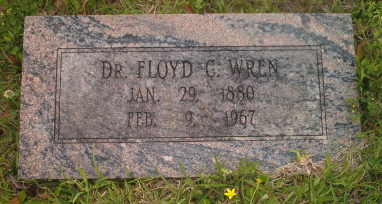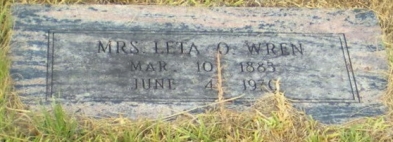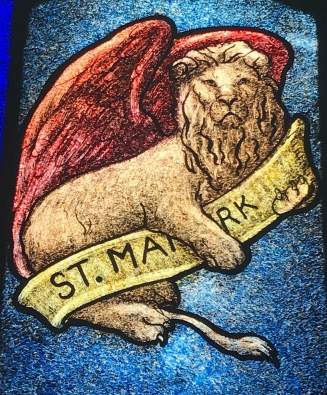 (Author’s note: This is the manuscript for my message on July 8, 2018 at FUMC Winnfield and is the fifth in my “Windows to the Soul” sermon series expounding on the Christian symbolism present in our church buildings and sanctuary windows at FUMC Winnfield. My sources are listed at the end. Much of this information is from “FUMC Winnfield: Christian Symbolism and History” published in 2012. I decided to publish in case some were absent and would like to read my message.)
(Author’s note: This is the manuscript for my message on July 8, 2018 at FUMC Winnfield and is the fifth in my “Windows to the Soul” sermon series expounding on the Christian symbolism present in our church buildings and sanctuary windows at FUMC Winnfield. My sources are listed at the end. Much of this information is from “FUMC Winnfield: Christian Symbolism and History” published in 2012. I decided to publish in case some were absent and would like to read my message.)
Introduction
 Today we will focus on Window Number four in honor of Dr. and Mrs F.C. Wren. Funeral services for Dr. Floyd Carr Wren, prominent retired dentist and civic leader, were held at 3 p.m. Friday, February 10, 1967 in the First Methodist Church of Winnfield with the Rev. Richard Walton, pastor, officiating. He was assisted by Rev. Fred Flurry, Sr., and the Rev. R. H. Staples, former pastors. Dr. Wren died at 12:20 p.m. Thursday, February 9, 1967, in a Winnfield hospital following an apparent heart attack. He was 87.
Today we will focus on Window Number four in honor of Dr. and Mrs F.C. Wren. Funeral services for Dr. Floyd Carr Wren, prominent retired dentist and civic leader, were held at 3 p.m. Friday, February 10, 1967 in the First Methodist Church of Winnfield with the Rev. Richard Walton, pastor, officiating. He was assisted by Rev. Fred Flurry, Sr., and the Rev. R. H. Staples, former pastors. Dr. Wren died at 12:20 p.m. Thursday, February 9, 1967, in a Winnfield hospital following an apparent heart attack. He was 87.
A native of Webster Parish, Dr. Wren received his degree in dentistry from Vanderbilt University, and first located in Jonesboro, where he served as Mayor while also practicing dentistry. He came to Winnfield in 1916 when he became a part of the religious and civic life in the community being active until the time of his death. He practiced dentistry until his retirement in 1945. At one time during his career he experienced an arthritic condition and operated a Winnfield dairy until his recovery.
Dr. Wren was Winn Parish registrar of voters from 1940 to 1948, and served as chairman of the Red Cross for 12 years. He was also active in the Salvation Army and other civic movements and was honored by the Winnfield Jaycees and Woodmen of the World for his vigorous activities as a senior citizen. A charter member of the Winnfield Rotary Club, Dr. Wren also served on the City Council and was a member of the local school board in the early years. He served as Sunday School superintendent for 30 years and was a retired steward of the church.[i]
 Funeral services for Mrs. Leta O. Wren, 87, of Winnfield, were held at 3:30 p.m. Friday, June 5, 1970 at the First Methodist Church of Winnfield with Rev. J. C. Skinner and Rev. Robert Gage officiating. Mrs Wren died at 11:15 a.m. Thursday, June 4, 1970, in a Winnfield hospital. She was a native of Caldwell, Ark., but lived in Tennessee during the early years of her life.
Funeral services for Mrs. Leta O. Wren, 87, of Winnfield, were held at 3:30 p.m. Friday, June 5, 1970 at the First Methodist Church of Winnfield with Rev. J. C. Skinner and Rev. Robert Gage officiating. Mrs Wren died at 11:15 a.m. Thursday, June 4, 1970, in a Winnfield hospital. She was a native of Caldwell, Ark., but lived in Tennessee during the early years of her life.
The widow of the late Dr. F. C. Wren, a Winnfield dentist, Mrs. Wren was an active and devoted member of the First United Methodist Church where she taught for many years. She held other offices in the church, including the presidency of the W. S. C. S., a women’s organization of the church. She was also a member of the Reader’s Review Club.[ii]
Dr. and Mrs. Wren were survived by; a daughter, Mrs. Thomas H. (Margaret) Harrel, Sr. of Winnfield, and two grandsons, Thomas Harrel, Jr., and George Harrel, all of Winnfield. They were preceded in death by a son, Floyd C Wren Jr, who died in a fire in August of 1953. The Wren’s were pillars of the church and were often relied on by the pastors. Dr. Wren was a fine Christian man who rarely uttered a cross word and actively gave out tracks to talk to others about faith. Their grandson, Tommy, described Dr. Wren as one of the greatest men he has ever known and is still his hero to this day. The Dr. Wren Sunday School classes was started and named after him in his memory. Dr. Wren wrote much of the original history of the church that I am using as a source for this series. The Wren’s and their family have passed a great tradition of faithfulness to us, as well as a wonderful gift in their beautiful window.
Body
A: The Lion of St. Mark
 The lion, as king of beasts, represents the royal character of Christ and refers to the opening verses of the Gospel in his reference to John the Baptist, “The voice of one crying in the wilderness . . .” The halo of light, the nimbus, behind the head denotes sanctity.
The lion, as king of beasts, represents the royal character of Christ and refers to the opening verses of the Gospel in his reference to John the Baptist, “The voice of one crying in the wilderness . . .” The halo of light, the nimbus, behind the head denotes sanctity.
Who was St Mark? While we are not certain, most scholars believe St. Mark the Evangelist was most likely a Hebrew and likely a priest of the tribe of Levi (as St Bede the Venerable teaches). Most scholars believe that St Mark did not know Christ during his earthly life but was converted to the faith by St Peter some time in the first years after Pentecost. This is the most natural read of Scripture, when St Peter testifies that St Mark is his spiritual son (“Mark, my son”, 1 Peter 5:13). He accompanied Peter to many places, even to Rome. Later, he was sent by St Peter to preach the Gospel in Egypt and was Bishop of the Church in Alexandria. Here he gave witness to Christ through martyrdom.
Why is St Mark pictured as a lion?
The images of the four Evangelists are taken from Ezekiel 1:5-10 and Revelation 4:7-8 and in large part from the manner in which they begin their Gospels. In Mark, interestingly, there is no birth narrative of Jesus or description of his early years. Instead, the Gospel of St Mark opens with the mighty roar of St John the Baptist’s call to repentance. So the gospel of St. Mark is often pictured under the powerful image of the lion. St Mark is also thought of as the founder of monastic life and of the desert fathers. Since St Mark is the father of the Church of Alexandria and this Church produced the great movement of consecrated religious life as hermit, anchorite, monk, or nun, St Mark is rightly considered by St Jerome and John Cassian to be the founder of monasteries and hermitages. Therefore, the image of the lion calls to mind St Mark’s connection with Alexandria and his role as the spiritual father of religious life in the Church.[iii]
The Lion of Saint Mark, is the symbol of the city of Venice and formerly of the Republic of Venice. It appears also in both merchant and military naval flags of the Italian Republic. The Lion of Saint Mark is also the symbol of the award of the Venice Film Festival, the “Golden Lion”, and is prominently featured in the city of Venice.[iv]
The oldest and the shortest of the four Gospels, the Gospel of Mark emphasizes Jesus’s rejection by humanity while being God’s triumphant envoy. Probably written for gentile converts in Rome—after the death of Peter and Paul sometime between A.D. 60 and 70—Mark’s Gospel is the gradual manifestation of a “scandal”: a crucified Messiah.[v] The lion of Mark is the roar to repentance by John the Baptist and throughout his gospel.
B. Faith, Hope, and Charity
Faith, Hop e, and Charity are referred to by Paul in I Cor. 13:13- “And now abideth faith, hope, charity, these three; but the greatest of these is charity.”KJV Faith is belief and trust in the triune God; Hope signifies our promise of eternal life and triumph of truth and justice; Charity, or love, is the center of our religion as taught by Jesus in many ways.
e, and Charity are referred to by Paul in I Cor. 13:13- “And now abideth faith, hope, charity, these three; but the greatest of these is charity.”KJV Faith is belief and trust in the triune God; Hope signifies our promise of eternal life and triumph of truth and justice; Charity, or love, is the center of our religion as taught by Jesus in many ways.
Faith
Representing faith is the cross. We spoke quite extensively about the symbolism and meaning of the cross last Sunday. Often when faith, hope, and charity are shown together the cross often stands taller than the other symbols. Faith is also the confidence and the strength to complete a larger task. The symbols of faith, hope and charity together in harmony remind us that God is there to help us each and every day.[vi]
Hope
The anchor represents Hope. It was a relevant popular symbol at a time when seafaring meant that a loved one may never be seen again. The anchor to moor the ship gives solace and comfort to the wayward ship, as it finds a home. Hope is fundamental to the principals of what it is to believe in a better future. At a time when danger was typical for travel, the anchor represented hope for home in this life and in the life to come.
Charity
Charity is often represented by the heart, though in our window it is symbolized by an open Bible. Charity is a derivative of ἀγάπη (agapē), the word used by the English translation of the Bible in the 16th century. It was only in the Challoner Douay Rheims Bible of 1752 and the King James Version of 1611 that the term ‘charity’ was used for the similar ideal of Christian love. Today, many modern translations use the word “love” instead of charity. Charity represents the idea the believers should strive to love God and to love others as God loves them. Charity symbolizes the desire to love everyone, including one’s enemies, neighbors and the poor. The three symbols are bound by charity. Charity cannot be achieved without faith and hope because charity is love for all.[vii] Faith, hope, and charity go together to teach us about our faith and the way that we should live.
C: The winged man of St. Matthew
 Matthew traced the human lineage of Jesus; therefore, the symbol used for him is a winged man. He emphasized the humanity of Christ. Here again is the nimbus of sanctity.
Matthew traced the human lineage of Jesus; therefore, the symbol used for him is a winged man. He emphasized the humanity of Christ. Here again is the nimbus of sanctity.
St. Irenaeus saw Matthew as corresponding to the man’s face because the gospel opens with a human genealogy of Jesus and because, in the view of Irenaeus, Jesus’ humanity is emphasized throughout the book.[viii]
Matthew, meaning gift of God, was a common Jewish name after the Exile. He was the son of Alphaeus, and was a publican or tax-gatherer at Capernaum. On one occasion Jesus, coming up from the side of the lake, passed the custom-house where Matthew was seated, and said to him, “Follow me.” Matthew arose and followed him, and became his disciple (Matt. 9:9). Formerly the name by which he was known was Levi (Mark 2:14; Luke 5:27); he now changed it, possibly in grateful memory of his call, to Matthew. The same day on which Jesus called him he made a “great feast” (Luke 5:29), a farewell feast, to which he invited Jesus and his disciples, and probably also many of old associates. He was afterwards selected as one of the twelve (6:15). His name does not occur again in the Gospel history except in the lists of the apostles. The last notice of him is in Acts 1:13. Although traditionally regarded as the author of the Gospel According to Saint Matthew, modern scholarship questions this attribution. Matthew’s symbol as an evangelist is a man, and in art he is often depicted with sword and money bag.
What happened to Matthew after Jesus’ resurrection and ascension we have only legend. St. Irenæus tells us that Matthew preached the Gospel among the Hebrews, St. Clement of Alexandria claiming that he did this for fifteen years, and Eusebius maintains that, before going into other countries, he gave them his Gospel in the mother tongue. Ancient writers are not consistent as to the countries evangelized by Matthew, but almost all mention Ethiopia to the south of the Caspian Sea (not Ethiopia in Africa), and some Persia and the kingdom of the Parthians, Macedonia, and Syria. There is a disagreement as to the place of St. Matthew’s martyrdom and the kind of torture inflicted on him, therefore it is not known whether he was burned, stoned, or beheaded.
His Gospel was probably first written in Aramaic and later translated into Greek. Since Matthew was a Jew, he wrote with other Jews in mind. His gospel spends much time discussing the Old Testament prophecies and pointing out how Jesus fulfilled them. Mathew’s gospel contains more than 130 Old Testament quotes and allusions[ix]. The man of St.Matthew reminds us of Jesus’ humanity and fulfillment of Old Testament prophecies about the Messiah.
Conclusion
We love our stained glass windows and we should. But this song from Johnny Cash reminds us that they are not the most important things. God Ain’t No Stained Glass Window God never keeps His window closed. What about us? Do we keep our window closed or allow the light of Christ shine through? The lion of St. Mark reminds us of his roar to repentance by John the Baptist. Faith, hope, and charity are central themes to our faith from 1 Corinthians 13. The man of St. Matthew reminds us of the humanity of Jesus through his grand genealogy and fulfillment of scripture.
I close with this editorial by George Larson, editor of the Winn Parish Enterprise. “Dr. F.C. Wren is gone from this earth but the memory and influence of this rare man will live long in this community and wherever his life touched other people. He lived unselfishly and fully, holding fast to high principles in every endeavor he undertook. He was a true Christian, a ‘prince of a man and a great man’ as Rev. Richard Walton of the First Methodist Church described him.
Dr. Wren’s kindness to all men was one of his outstanding traits. Always interested in his community and its progress, he never ceased to talk and write about its good points and its future possibilities. He had the courage to speak up for what he believed, whether it concerned a political question, a local bond proposal, or some other controversial issue.
Dr. Wren’s life really centered around his church, to which he gave a lifetime of service in nearly every capacity a layman could fill. Living, working, and serving were joyful to him. He was a participant and not just a spectator. He remained young at heart.
He died as he wished it- being useful and active until the last days of his 87 years. His passing leaves a void, but his life will always be an inspiration to those who knew him. Dr. Wren was a great and good man.” The Wren window reminds us of their faith and generosity. The question is will we allow the light of God to shine through us as brightly as it does these windows?
[i] https://www.findagrave.com/memorial/25613536/floyd-carr-wren
[ii] https://www.findagrave.com/memorial/62098564/leta-wren
[iii] http://newtheologicalmovement.blogspot.com/2016/04/who-was-st-mark-and-why-is-he-pictured.html
[iv] https://en.wikipedia.org/wiki/Lion_of_Saint_Mark
[v] https://www.franciscanmedia.org/saint-mark/
[vi] https://artofmourning.com/2014/12/25/faith-hope-and-charity/
[vii] https://www.reference.com/world-view/symbols-faith-hope-charity-e40cce894175cf56
[viii] http://www.moodycatholic.com/Saints_Symbols_of_Gospel_Writers.html
[ix] https://www.jesusfilm.org/blog-and-stories/gospel-of-matthew.html
